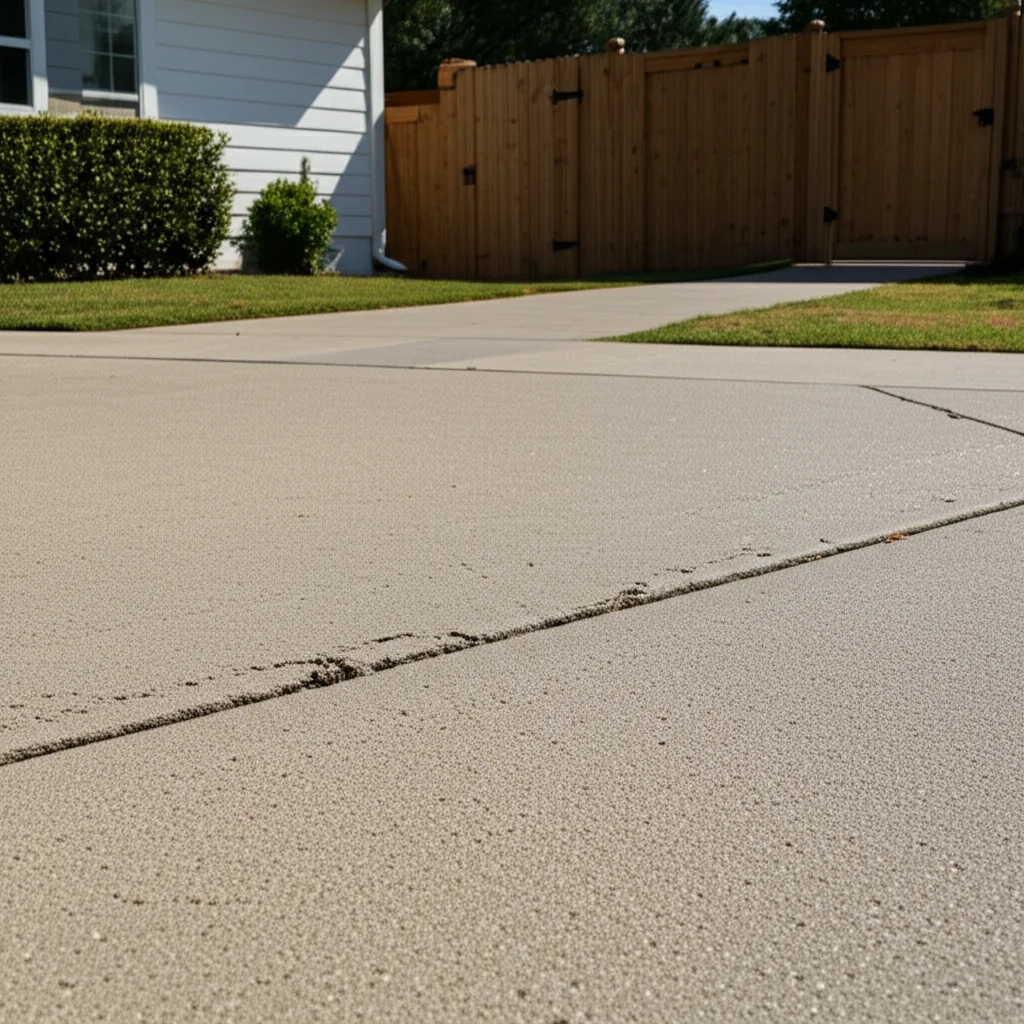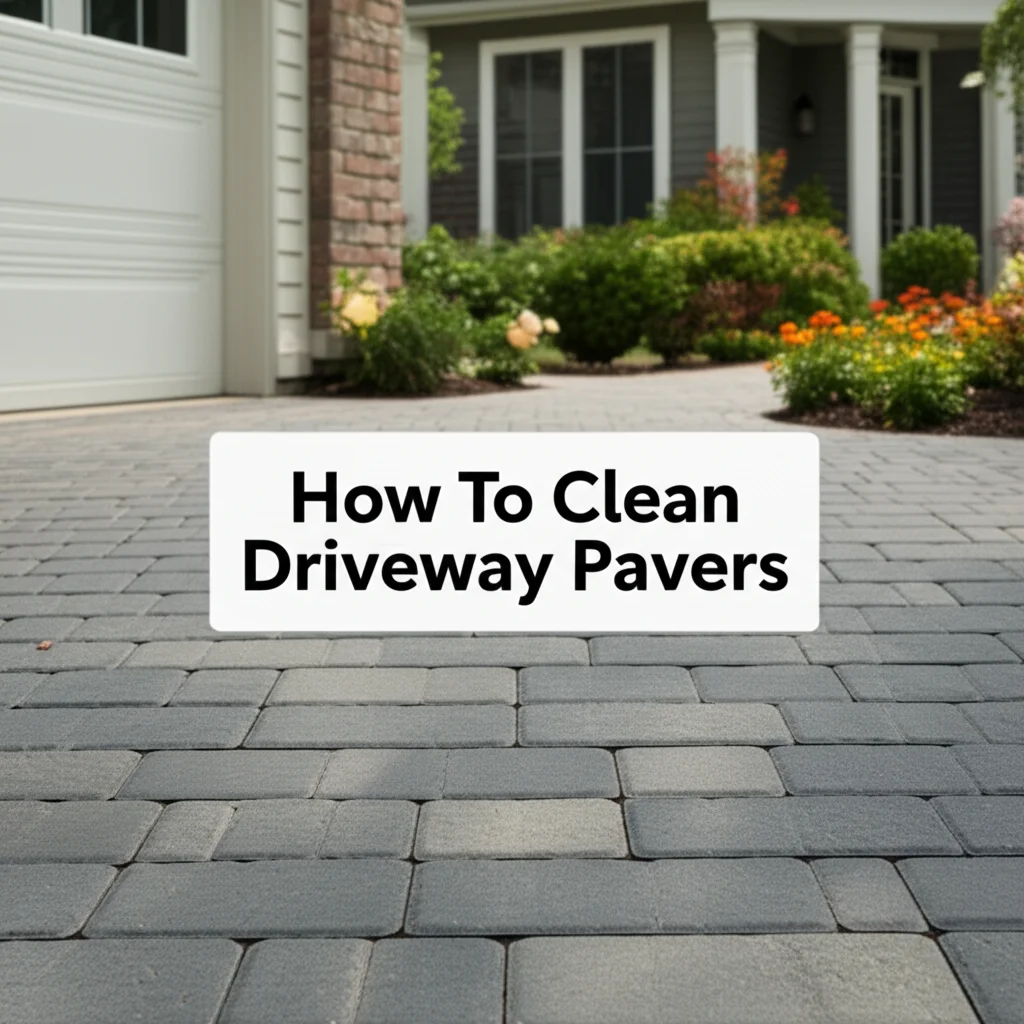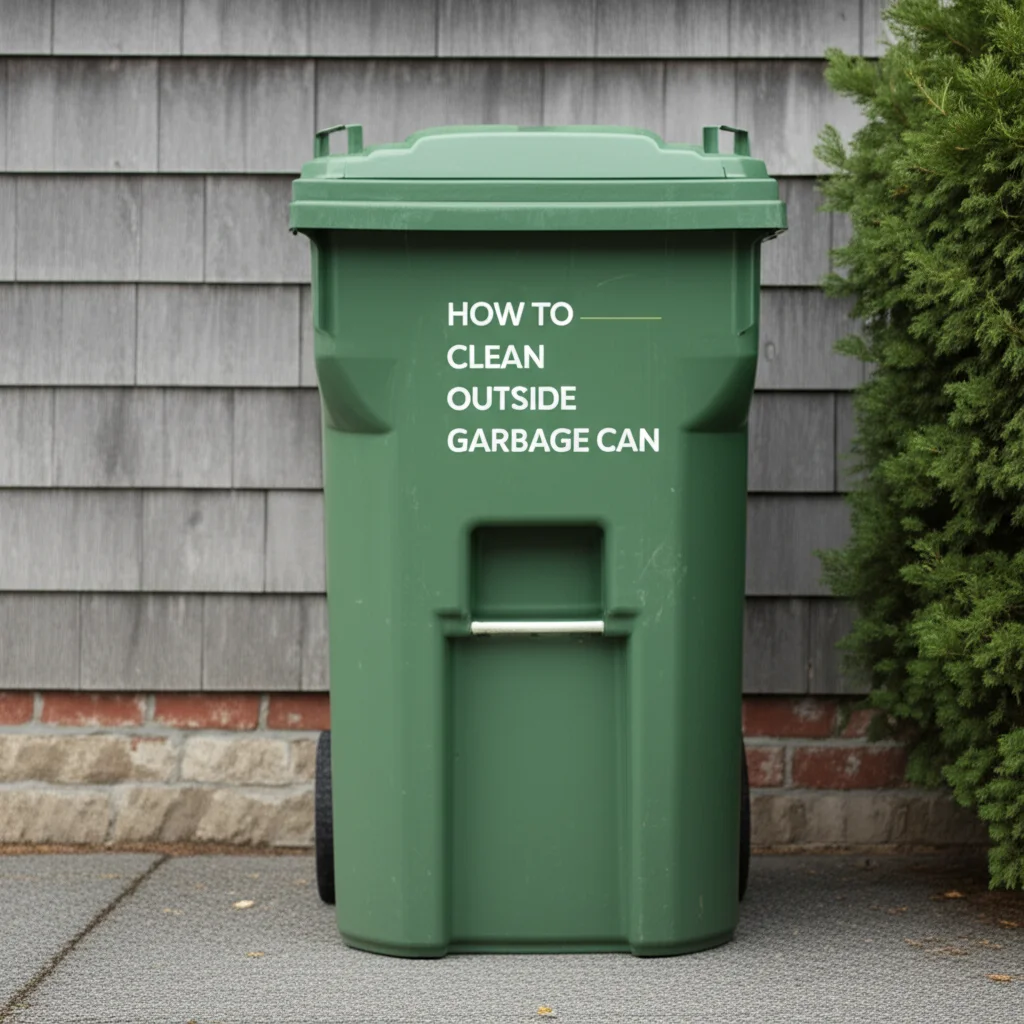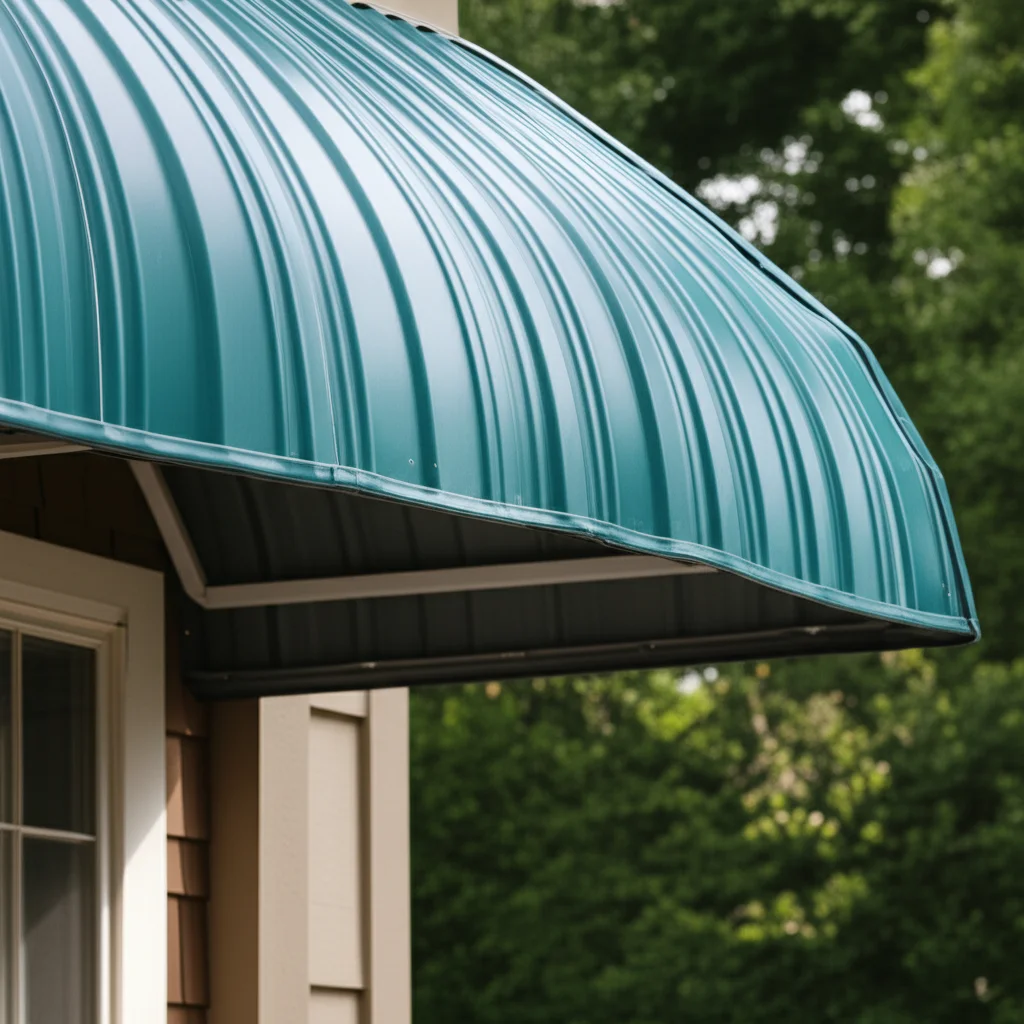· Todd Martin · Home Maintenance · 13 min read
How To Clean Cement Driveway

How to Clean Your Cement Driveway Effectively
A clean driveway makes a big difference to your home’s curb appeal. Over time, cement driveways collect dirt, oil, mold, and various unsightly stains. Knowing how to clean cement driveway surfaces properly is crucial. This guide will walk you through the necessary steps and methods to restore your driveway’s pristine condition. We will cover preparation, essential tools, general cleaning techniques, specific stain removal strategies, and crucial maintenance tips.
Takeaway
- Prepare your driveway by clearing debris and protecting surrounding areas.
- Gather the right tools: pressure washer, stiff brush, cleaning solutions.
- Choose the best cleaning method for your needs, either pressure washing or manual scrubbing.
- Address specific stains like oil, mold, or rust with targeted solutions.
- Maintain your driveway regularly and consider sealing it for protection.
A cement driveway becomes clean by first removing loose debris, then applying a suitable cleaner, and finally scrubbing or pressure washing the surface. Targeted solutions are necessary for specific stains like oil, grease, or mold, ensuring a thorough restoration of its appearance.
Getting Ready: Preparing Your Driveway for Cleaning
Preparing your cement driveway properly before cleaning is a vital first step. This preparation ensures a more effective and safer cleaning process. Skipping this stage can lead to less satisfactory results and potentially damage. I always start here to guarantee a good clean.
First, clear the entire driveway of any loose items. This includes toys, garden tools, garbage bins, and anything else sitting on the surface. Move your car or vehicles completely off the driveway. This gives you full access to the area you need to clean.
Next, sweep the driveway thoroughly to remove all loose dirt, leaves, and other debris. A stiff-bristled broom works best for this. You want to get rid of as much surface grime as possible before applying water or cleaning solutions. This prevents the dirt from turning into mud and spreading during the wash.
Finally, protect nearby plants and landscaping. If you are using strong cleaning solutions, these can harm vegetation. You can cover delicate plants with plastic sheeting or rinse them thoroughly with plain water before and after cleaning the driveway. This simple step saves your garden from chemical exposure.
Essential Tools and Materials for a Pristine Finish
Having the right tools and materials is fundamental for successful cement driveway cleaning. Using appropriate equipment makes the job easier and delivers better results. Investing in quality items will pay off with a cleaner driveway and less effort.
The primary tool for deep cleaning is a pressure washer. A pressure washer uses high-pressure water to blast away dirt, grime, and stains. Different nozzles are available for various tasks, from wide sprays for general cleaning to narrow jets for tough spots. If you do not own one, many hardware stores offer pressure washer rentals.
For those without a pressure washer, a sturdy stiff-bristled brush or push broom is essential. You will also need a garden hose with a strong spray nozzle. Buckets for mixing cleaning solutions are also very useful. This manual approach requires more effort but can still yield good results. You can learn more about how to clean a driveway without a pressure washer if you prefer a non-mechanized approach.
Regarding cleaning solutions, you have several options. A specialized concrete cleaner is often the most effective choice for general dirt and grime. For stubborn stains, specific treatments like degreasers for oil, rust removers, or bleach solutions for mold might be necessary. Always check the product label for proper dilution and application instructions.
General Cleaning Methods: Pressure Washing vs. Manual Scrubbing
Choosing the right cleaning method for your cement driveway depends on the level of dirt and your available tools. Both pressure washing and manual scrubbing can be effective, but they each have specific advantages. Understanding these methods will help you decide the best approach for your cleaning needs. I often switch between these methods based on the specific condition of the driveway.
Pressure Washing Techniques
Pressure washing is highly efficient for large areas and deep-seated dirt. The high-pressure water stream quickly removes grime, mold, and general stains. Start by applying a concrete cleaner with a low-pressure nozzle or a detergent tank. Let the cleaner sit for the recommended time, usually 10-15 minutes, allowing it to break down the dirt.
Then, switch to a higher-pressure nozzle, typically a 25-degree or 40-degree tip. Hold the nozzle about 6-12 inches from the surface. Work in even, overlapping strokes, moving steadily across the driveway. Do not hold the nozzle in one spot for too long, as this can etch or damage the concrete. This method thoroughly cleans the surface quickly and effectively.
Effective Manual Scrubbing
Manual scrubbing is a great alternative if you do not have a pressure washer or for smaller areas and touch-ups. This method requires more elbow grease but is gentle on the driveway. You will need a stiff-bristled brush or a push broom and a garden hose.
Begin by wetting the entire driveway surface with water from your hose. Apply your chosen concrete cleaner directly to the wet surface or mix it with water in a bucket. Work in small sections, thoroughly scrubbing the cleaner into the cement with your brush. Apply firm, consistent pressure. After scrubbing, rinse the section completely with water from the hose. Repeat this process for the entire driveway until it is clean. This method is effective for general cleaning and surface grime.
Tackling Common Driveway Stains
Cement driveways are magnets for various stains. Oil, grease, rust, and mold are common culprits that can detract from your driveway’s appearance. Each type of stain requires a specific approach and cleaning solution for effective removal. Knowing the right treatment saves time and effort. For deeper insights into removing various concrete imperfections, you might find this guide on how to clean stains from concrete helpful.
Removing Oil and Grease Stains
Oil and grease stains are among the most persistent. Act quickly when you notice a fresh spill. For fresh oil, first, absorb as much as possible with kitty litter, sawdust, or sand. Let it sit for a few hours or overnight, then sweep it up. This prevents the oil from soaking deeper into the cement.
For older or tougher oil and grease stains, a specialized degreaser is necessary. Apply the degreaser directly to the stain, following product instructions. Often, you will need to let it soak for a while before scrubbing with a stiff brush. Rinse thoroughly with water or pressure wash the area. For detailed instructions on removing automotive fluids, refer to articles like how to clean oil from concrete or how to clean antifreeze off driveway.
Eliminating Rust Stains
Rust stains often come from metal furniture, tools, or leaking vehicles. These orange-brown marks can be challenging to remove. Avoid using bleach, as it can react with rust and embed the stain further. Instead, opt for a rust remover specifically designed for concrete.
Apply the rust remover to the stain as directed by the manufacturer. Most products require some dwell time to dissolve the rust. Scrub the area with a stiff brush, then rinse thoroughly. You might need to repeat the process for very old or deep rust stains. Sometimes, a mixture of lemon juice and salt can also work for lighter rust marks.
Cleaning Mold and Mildew
Mold and mildew thrive in damp, shaded areas on your driveway. These fungal growths create unsightly black or green patches and can make the surface slippery. They are generally easier to remove than oil or rust. For specific advice on fungal growth, check out how to clean mold off concrete.
A simple solution of equal parts household bleach and water often works wonders. Apply the solution to the affected areas and let it sit for about 10-15 minutes. Scrub the mold and mildew vigorously with a stiff brush or use a pressure washer. Rinse the area completely with fresh water afterward. For an eco-friendly option, white vinegar can also be effective, though it may require more scrubbing.
Eco-Friendly Cleaning Solutions for Your Driveway
Many people prefer to avoid harsh chemicals when cleaning their outdoor spaces. Fortunately, several eco-friendly solutions can effectively clean your cement driveway. These natural alternatives are safer for your family, pets, and the environment. They also often use ingredients you already have at home.
One of the most versatile natural cleaners is white vinegar. A solution of equal parts white vinegar and water can tackle light mold, mildew, and general dirt. Apply the solution to the driveway, let it sit for about 30 minutes, then scrub with a stiff brush and rinse thoroughly. Vinegar is acidic, which helps break down grime without toxic fumes.
Baking soda is another excellent eco-friendly option, especially for minor stains and odors. You can create a paste by mixing baking soda with a little water. Apply this paste directly to the stain, let it sit for a while, and then scrub it away. This method is particularly useful for light oil spots or discoloration.
For tougher stains, or when you need a bit more power, a mixture of Dawn dish soap and warm water works well. Dawn is known for its grease-cutting properties. Apply the soapy water to the driveway, let it soak into the dirt, then scrub and rinse. This solution is biodegradable and effective for general grime. Always remember to collect runoff water if using large quantities of any cleaner, even eco-friendly ones, to prevent it from entering storm drains.
Driveway Sealing and Ongoing Maintenance Tips
Once your cement driveway is sparkling clean, the next step is to protect it and keep it looking good. Proper sealing and regular maintenance extend the life of your driveway. These actions also reduce the frequency of deep cleaning. I always recommend these steps to my clients.
Sealing your driveway is a crucial protective measure. A concrete sealer creates a barrier on the surface, preventing water, oil, and other contaminants from penetrating the cement. This significantly reduces staining and cracking. Apply the sealer after the driveway is completely dry and clean. Follow the manufacturer’s instructions for application, usually involving a roller or sprayer. Sealing is typically recommended every 2-5 years, depending on traffic and climate.
Regular maintenance is key to long-term cleanliness. Sweep your driveway regularly to remove leaves, dirt, and debris. This prevents organic matter from decomposing and leaving stains. Address spills immediately, especially oil or chemicals, to prevent them from soaking in. A quick spot clean is much easier than a full driveway overhaul.
Consider trimming overhanging trees and shrubs that cast excessive shade or drop berries and leaves. Less shade can reduce mold and mildew growth. Ensure proper drainage to prevent standing water, which can contribute to staining and erosion. These simple ongoing habits keep your driveway looking its best with minimal effort.
Safety First: Important Precautions During Driveway Cleaning
Cleaning a cement driveway, especially with powerful tools or chemicals, requires attention to safety. Taking proper precautions protects you from injury and prevents damage to your property. Always prioritize safety before beginning any cleaning task.
Wear appropriate personal protective equipment (PPE). This includes safety glasses or goggles to protect your eyes from splashes and debris, especially when using a pressure washer. Gloves are also essential, particularly if you are handling cleaning solutions or chemicals, to protect your skin. Closed-toe shoes with good grip prevent slips and falls on wet surfaces.
Be mindful of the powerful force of a pressure washer. Never point the pressure washer nozzle at yourself, other people, or pets. The high-pressure spray can cause serious injury. Keep a safe distance from windows, vinyl siding, and other delicate surfaces that could be damaged by the strong stream. Test the pressure washer on an inconspicuous area first to ensure it does not damage your specific type of cement.
When using cleaning chemicals, always work in a well-ventilated area. Avoid inhaling fumes directly. Read all product labels carefully for specific safety instructions, including dilution ratios and any warnings. Keep children and pets away from the cleaning area until the job is complete and the surface is dry. Proper ventilation and adherence to product guidelines ensure a safer cleaning experience.
Frequently Asked Questions About Cleaning Cement Driveways
How often should I clean my cement driveway?
The frequency depends on traffic, climate, and surrounding foliage. For most driveways, a thorough cleaning once or twice a year is sufficient. Areas with heavy tree cover, frequent spills, or high foot traffic might benefit from more frequent cleaning. Regular sweeping between deep cleans helps maintain its appearance.
Can I use bleach on my cement driveway?
Yes, you can use diluted bleach on cement driveways, especially for mold and mildew. Mix equal parts bleach and water. However, avoid using it near plants, as it can harm them. Always rinse thoroughly with water after applying bleach. Test on an inconspicuous area first to ensure it does not discolor your concrete.
What is the best way to remove old oil stains from concrete?
For old oil stains, a specialized concrete degreaser or poultice is often most effective. Apply the product, let it soak to lift the oil, then scrub with a stiff brush and rinse thoroughly. Repeat applications might be necessary for deep-set stains. kitty litter or baking soda can absorb fresh spills before they set.
Is pressure washing safe for all driveways?
Pressure washing is generally safe for most cement driveways. Use the correct nozzle (25-degree or 40-degree) and maintain a consistent distance to avoid damaging the surface. Avoid using a zero-degree nozzle directly on the concrete, as it can etch or stripe the surface. Test a small, hidden area first.
How can I prevent mold and mildew from growing on my driveway?
To prevent mold and mildew, ensure your driveway gets plenty of sunlight and drains well. Trim back overhanging trees or shrubs that create excessive shade. Apply a concrete sealer, as this can create a less hospitable surface for growth. Regular sweeping also helps remove organic matter that mold feeds on.
What if I don’t have a pressure washer?
You can still clean your cement driveway effectively without a pressure washer. Use a stiff-bristled brush or push broom, a garden hose, and a good concrete cleaner or a mixture of dish soap and warm water. Apply the solution, scrub vigorously in sections, and then rinse thoroughly with the hose.
Final Thoughts on Cement Driveway Cleaning
Cleaning your cement driveway might seem like a large task, but it is a manageable one. Following the right steps and using the correct tools ensures a successful outcome. We covered how to prepare your area, choose between pressure washing and manual scrubbing, and tackle tough stains like oil, rust, and mold. Remember, eco-friendly options are available, and safety should always come first.
Ongoing maintenance and sealing your driveway protect your investment. A clean cement driveway boosts your home’s curb appeal and extends its lifespan. Take pride in your home’s exterior by keeping your driveway sparkling. Start your driveway cleaning project today and enjoy the renewed beauty of your outdoor space.





